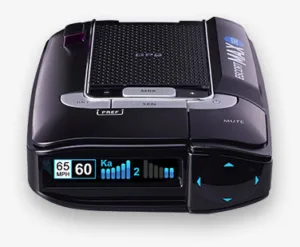For troglodytes such as myself — who believe that the reason for Interstate Highway on-ramps is to see how much lateral acceleration you can generate as you drive up them — it is disheartening to to realize that the current generation cares more about a car’s entertainment and informatics systems than it does about the engine, transmission, and suspension. There have been reports that some auto brands have more engineers working on the infotainment system than on engine development.

As Samit Ghosh, CEO of P3 North America put it recently, “In-car entertainment and safety capabilities provided through telematics and infotainment technologies are rapidly becoming the reasons consumers buy vehicles, so the stakes have never been higher.” Sigh! But I get it. Except that just about the time I was resigning myself to the primacy of the local on-board infotainment system, I realized what Steve Jobs failed to realize when he excitedly left Xerox’s Palo Alto Research Center to steal the concept of the computer mouse and the graphical user interface. He didn’t stick around long to notice, as he himself said, that the computers were networked! And what is transforming the local infotainment system is that it is being wirelessly connected to a network.
Escort’s expensive MAX 360 radar/laser detector provides a hint of the rapid connected-car developments now under way. Via GPS the unit determines the car’s location and accesses a continually updated data base of fixed radar/laser false alarms and fixed sites of “threatening” activity. (Photo: Escort, Inc.)The connected car is already here in various simple forms, including General Motors’ On-Star, high-end radar detectors that automatically locate recurring false alarms via GPS and access an on-line data-base of known false alarms and recently reported locations of police activity, and speed-control systems that uses GPS and mapping systems to anticipate hills and adjust accelerator angle pro-actively rather than waiting for a slight reduction in vehicle speed to trigger an adjustment.
Progressive Insurance in the U.S. encourages its auto policy holders to plug a recorder into the their vehicles’ OBD II diagnostic connector, with the suggestion that if you obey all speed limits and accelerate like a turtle, Progressive will reduce your insurance rates. (I believe the current recorder is intended to be removed and sent to your Progressive agent, but can on-line monitoring be far behind?)
So what’s hot now is “the connected car.” Although it is certainly possible to build crash-avoiding, self-driving vehicles based only on local on-board systems — which is what Google, Audi, and others have already done — vehicular safety would be even greater if an automated air-traffic-control system for the national road system mapped every vehicle via GPS and other network data and notified each car of the location of surrounding mobile and fixed hazards, including those over the next several hills. The number of less momentous features and applications is huge, some of which would greatly benefit the vehicle’s owner and driver, and some of which would be exploitive.
Not all of these features and applications will directly involve displays, either in the vehicle or in central control facilities, but many will.
CES has announced its automotive exhibit space, which is located in the Las Vegas Convention Center’s North Hall, will be 25% larger in 2016 than it was last January, with nine auto makers and 115 auto technology companies introducing products. We’ll be covering the connected car and automotive infotainment systems at CES 2016 for you, without worrying too much about whether a display is explicitly part of each product we cover. At this early and exciting stage of development, you may want the opportunity to create the opportunites for displays in these systems as they are created. Ken Werner
Ken Werner is Principal of Nutmeg Consultants, specializing in the display industry, manufacturing, technology, and applications, including mobile devices and television. He consults for attorneys, investment analysts, and companies using displays in their products. You can reach him at [email protected].

